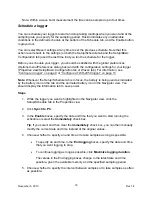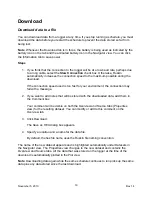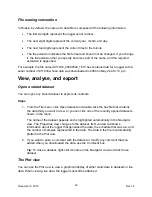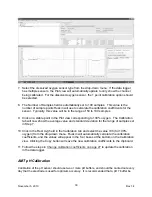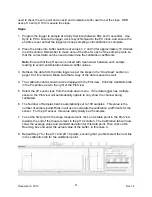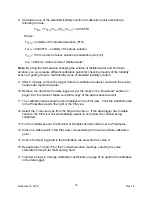
Important
: The conductivity, temperature, and depth sensors were calibrated to their
specified accuracy before shipment, traceable to NIST standards. We strongly recommend
that you consult RBR before changing any of these calibration coefficients.
Steps
1. While the logger you want is highlighted in the Navigator view, click the Calibration
tab in the Properties view.
The current values for the coefficients appear.
Tip
: To view the previous set of coefficient values for the logger, scroll to the bottom
of the Calibration tab and click
Retrieve previous episode
. To view all previous
sets of coefficient values, click
Retrieve all episodes
. You may want to click the
maximize button **show button**for the Properties view.
2. Choose how you want to make your changes.
Goal Action
To change calibration coefficients directly in
Ruskin
Click each value once, type a different value,
and press Enter.
To copy out an entire row or the entire table
Note
: Individual columns of data cannot be
copied.
If copying a single row, highlight the row in the
table and then click
Copy from selected row
.
If copying the entire table, click
Copy table
.
To paste data for an entire row or the entire
table
If pasting a single row, highlight the row
whose data you are changing and then click
Paste to selected row
.
If pasting an entire table, click
Paste table
.
Tip
:
Until you store the calibration values, you can restore the original coefficient values
in the table at any time by clicking
Revert calibration
.
3. After you finish making all the changes that you want, click
Store calibration
to write
the coefficients into the logger memory.
N-Point Calibration
RBR data loggers use several types of sensors that generate a voltage output that is
proportional to the value of the parameter being measured. Ruskin will allow N-point
calibration of these sensors, specifically dissolved oxygen measured by an Oxyguard
sensor, pH, turbidity and depth in a TGR-1050HT. Ruskin can be used to easily generate
November 5, 2010
Rev1.4
28



